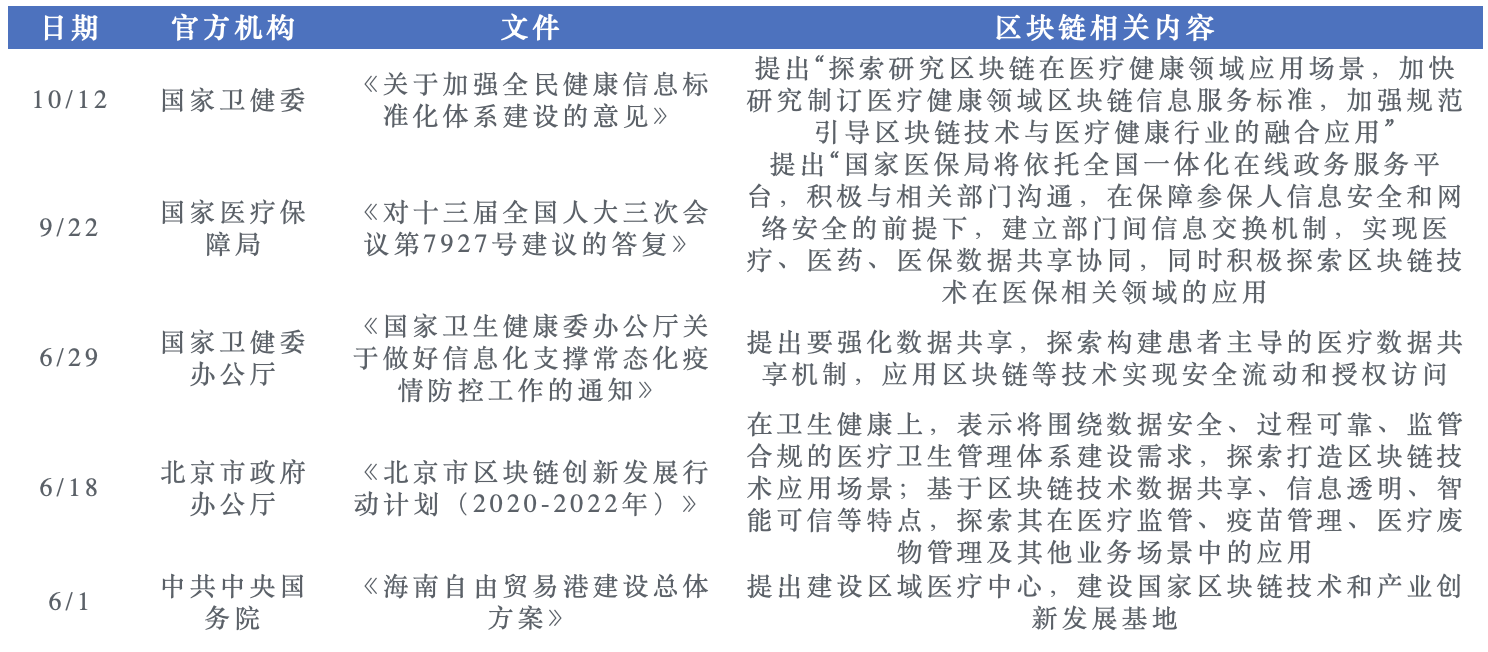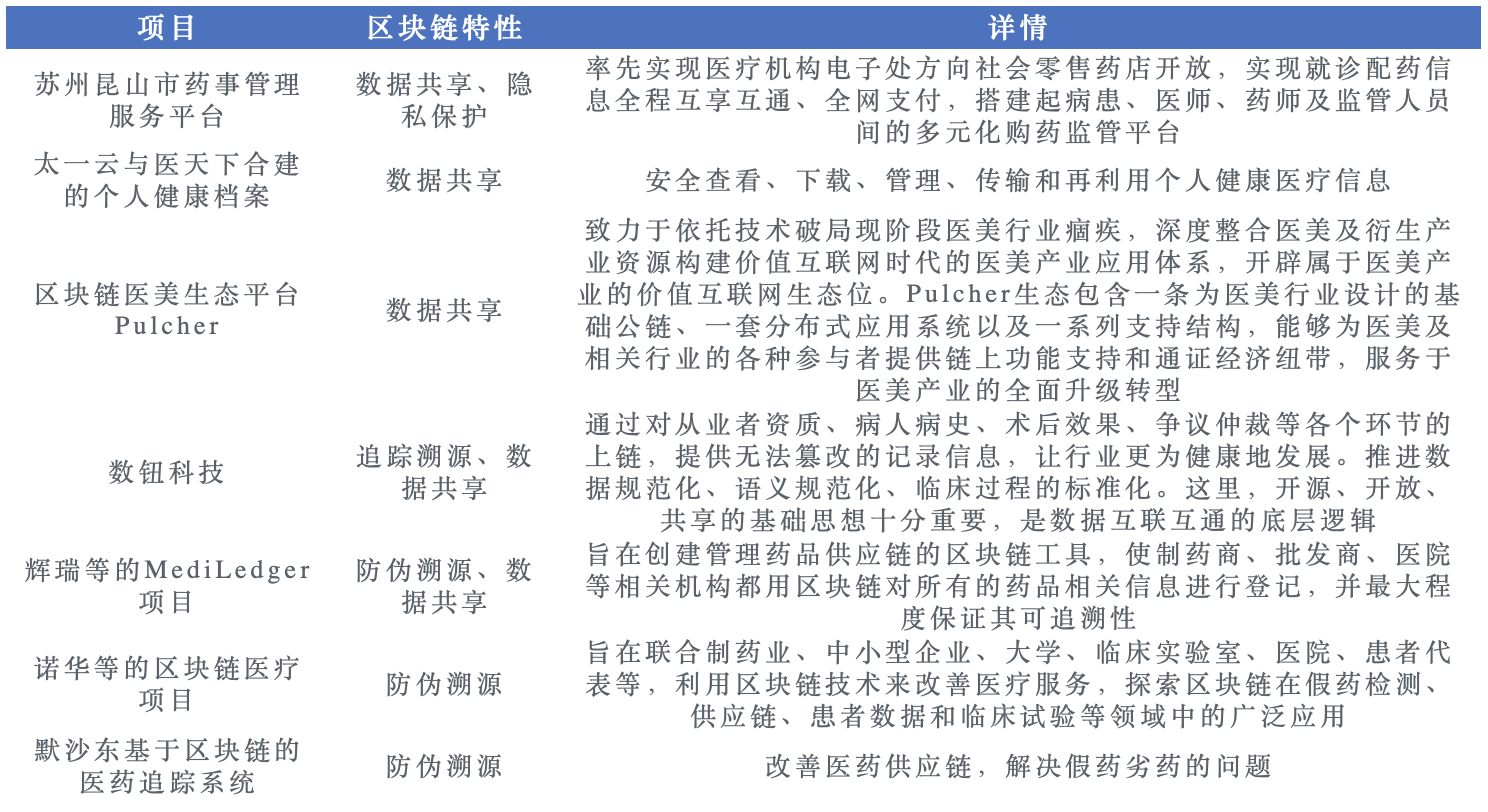secondary title
1. Blockchain Empowers Medical Industry Background
1. Blockchain features can solve the pain points of traditional industries
In recent years, blockchain, as a disruptive cutting-edge technology, has collided with many traditional industries under the enthusiasm of the market, creating application cases of blockchain empowerment. Blockchain technology has the characteristics of distributed storage, non-tampering, and transparent and traceable data. It can naturally solve the pain points of many industries such as information asymmetry, trust issues, and information islands. Therefore, it is widely used in finance, supply chain, and intellectual property rights. , insurance, medical and other fields.
2. The medical industry urgently needs the rational allocation and effective utilization of resources
The medical industry can be said to be just needed by the society, and with the aging population and the improvement of people's health awareness, the demand for medical care continues to expand. At the same time, the problem of difficulty in seeing a doctor has troubled many people, so the rational allocation and effective use of medical resources have become the primary issue.
Specifically, from the perspective of demand, population size and population structure are the direct factors that affect demand. According to the National Bureau of Statistics, my country's total population reached 1.4 billion at the end of 2019. At the same time, the population over the age of 65 accounts for 12.57%, which is 180 million people, and this number will continue to grow year by year. In the past three years, the average annual compound growth rate of the population over the age of 65 has reached 5.45%. The ability and willingness to seek medical treatment are also factors that affect demand. In recent years, people's living standards have improved and their health awareness has continued to increase. my country's urbanization rate has steadily increased, reaching 60.60%, and an average annual growth rate of 1.04% in the past three years.
At the supply level, the absolute value of the medical industry is increasing year by year, but per capita resources are still insufficient. As of June 2020, the number of tertiary hospitals, secondary hospitals, and first-level hospitals in my country was 2,831, 9,901, and 11,400 respectively. The cumulative number of consultations in the first half of 2020 was 13.6, and the number of consultations per capita was less than 1.
In addition, the allocation and utilization of medical resources need to be improved, and the subdivisions such as pharmaceutical marketing and product distribution are relatively traditional, which urgently need new technologies such as blockchain, big data, and artificial intelligence to transform.
3. Official documents: Actively explore the application of blockchain in medical scenarios

Recently, many official organizations such as the National Health and Health Commission have recognized the importance of blockchain and advocated the integration and application of blockchain and the medical and health industry. First working meeting.
4. The key points of blockchain empowering the medical industry
Leakage of medical information: Personal medical data is very private and important. According to Tencent Smart Security, medical information on the black market in the United States is 10 times that of credit card information. However, the precious data in the medical industry is suffering from internal and external troubles: there are bad people coveting inside, and hackers are coveting outside. According to the 2017-2018 China Hospital Informatization Survey Report released by the China Hospital Association Information Management Professional Committee (CHIMA), the 484 independent hospitals interviewed are all facing different degrees of information leakage risks. There are many medical information leakage incidents across the country. In September 2017, the Legal Daily reported that a hospital’s service information system was hacked, resulting in information leakage of 700 million citizens. In September 2018, the Economic Daily reported that among the top three hospitals in the country, 247 The hospital detected ransomware. The encryption algorithm in the blockchain can effectively protect the privacy of patients. Even if it is leaked, bad people or hackers will get encrypted anonymous information, which will not pose a threat to the privacy of patients;
image description
Source: China Hospital Association Information Management Professional Committee (CHIMA) "2017-2018 China Hospital Informatization Survey Report", Tencent Smart Security, Okey Cloud Chain Research Institute
Counterfeit and inferior medicines: Counterfeit or inferior medicines and equipment do great harm to patients, and they will also seriously damage people's confidence in medical institutions. The most famous case is the 2018 Changsheng biological vaccine fraud, and blockchain technology can support anti-counterfeiting and traceability. The data of drugs or equipment from research and development to production and circulation are completely transparent. Curb counterfeiting.
2. Pain points of the pharmaceutical industry and blockchain solutions
text
1. Potential scenarios of blockchain medical applications

According to the links of medical services, the medical field is divided into product research and development, pricing, and sales links, and user consultation and insurance links. The problems in each link and the blockchain solutions are respectively explained.
(1) In terms of research and development, the blockchain is conducive to data sharing and prevents clinical trial data from being falsified. At the same time, the sharing of valuable scientific research data can promote the common progress of the industry;
(2) Some drugs, especially innovative drugs, are very expensive, and the price is high. By uploading the cost data of each link, it is conducive to the disclosure of transparent price details and restraining the behavior of asking for prices;
(3) The medical industry has a complex system, low industry concentration, and many scattered small companies, resulting in low data transparency and a lot of counterfeit and shoddy products. The data transparency and anti-counterfeiting traceability functions of the blockchain can prescribe the right medicine;
(5) The downstream of the medical industry is insurance and other fields, which have problems of complicated process and lack of trust. When declaring medical insurance, many documents are required, and there are fraudulent insurance behaviors. Using the blockchain to upload medical and related insurance information, supplemented by smart contracts to realize automatic claims settlement, can effectively solve the trust crisis and avoid complicated processes.
text
2. Possible obstacles and suggestions for the implementation of blockchain medical applications
A major application of blockchain medical care is data sharing, but the interests of stakeholders and the game may hinder the application process. For example, the experimental data in the R&D stage may leak the R&D progress, and other people may use the experimental data to make results first, and get there first. Therefore, it is recommended to delay the on-chain of R&D data, such as uploading the data to the chain after successful R&D, which not only realizes the openness and transparency of clinical trial data, but also protects intellectual property rights. However, the data sharing between hospitals, hospitals and downstream medical insurance involves multiple institutions, which may require top-down or multi-party cooperation blockchain projects.
At the same time, blockchain technology is not omnipotent. In addition to the reform of blockchain technology, such as anti-corruption and anti-counterfeiting, offline human efforts are also required to digitize the process, ensure that information is completely uploaded to the chain, and prevent private transfers offline. .
3. Current status of blockchain medical applications
text
1. Blockchain medical project

The following table sorts out the recent blockchain application projects in the medical industry, most of which are still under development or pilot.
MediLedger is a typical joint research and development project of multiple institutions. The participants include Pfizer, Chronicled, McKesson Corp, etc. The project is still under development. It mainly solves the problem of data sharing, and uses smart contracts to automatically perform reconciliation, refunds, etc. process.
text
2. Features of blockchain medical application projects
More top-down or multi-agency cooperation methods are adopted. As mentioned above, cross-agency data sharing involves multi-party interest games. The top-down approach is conducive to the rapid and smooth progress of the project. The multi-party strategy of large institutions Collaboration facilitates reaching consensus.
secondary title
4. Summary and Outlook
With the aging of the population, the rate of urbanization, and the improvement of people's ability and willingness to see a doctor, the demand for medical care is increasing. However, the per capita supply of medical care is limited. Under this background, the effective allocation and full utilization of medical resources appear to be Especially critical.



